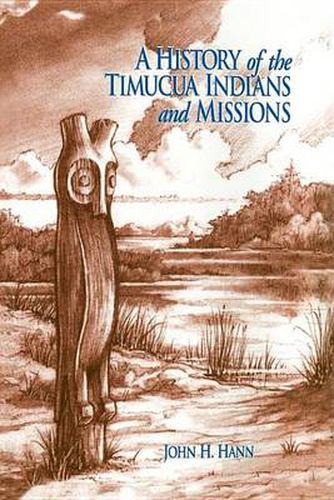Readings Newsletter
Become a Readings Member to make your shopping experience even easier.
Sign in or sign up for free!
You’re not far away from qualifying for FREE standard shipping within Australia
You’ve qualified for FREE standard shipping within Australia
The cart is loading…






This title is printed to order. This book may have been self-published. If so, we cannot guarantee the quality of the content. In the main most books will have gone through the editing process however some may not. We therefore suggest that you be aware of this before ordering this book. If in doubt check either the author or publisher’s details as we are unable to accept any returns unless they are faulty. Please contact us if you have any questions.
An extraordinary scholarly work … [that] will immediately make everything else written about the Timucua and the Spanish mission system in La Florida out-of-date. This will be the basic scholarly reference for students of Florida history and historical archaeology. –Jerald T. Milanich, Florida Museum of Natural History
An intricate and detailed portrait of the Timucuan Indians during the European colonial era … will undoubtedly stand as the principal source regarding the land of the Timucua speakers for years to come… . A classic example of historical scholarship. –John E. Worth, Fernbank Museum of Natural History, Atlanta When Spanish and French explorers first landed in Florida early in the 16th century, Timucua speakers occupied more land area and were more numerous than any other aboriginal group. This is their first detailed history, a major study that places its author in the forefront of Spanish colonial historians working in the United States.
The Timucua are the only native people of Florida whose language survives in literature in sufficient quality and quantity to permit significant study. Relying on previously unused documents, this account of the Timucua traces their experience from first contact with Europeans to their exile to Cuba in 1763 and their final eradication.
Beginning with the question of their number and their locations in northern Florida and southern Georgia, John Hann examines the Timucua’s contacts with various European groups, starting with Ponce de Leon’s expedition. He includes a detailed presentation of their experience under the mission regimes, and covers such topics as the Europeans’ descriptions of the people, their language, culture, and political structures, the derivation of their language, and the meanings of their placenames and titles. He also resolves confusion over the extent of the territory of a Timucua subgroup known as the Mocama, and discusses other Florida native peoples who moved into Timucua territory as refugees during the first half of the 18th century.
John H. Hann is the historian at the San Luis Archaeological and Historic Site in Tallahassee. He is the editor and translator of Missions to the Calusa (UPF, 1991) and the author of Apalachee: The Land Between the Rivers (UPF, 1988) and many articles and book chapters.
$9.00 standard shipping within Australia
FREE standard shipping within Australia for orders over $100.00
Express & International shipping calculated at checkout
This title is printed to order. This book may have been self-published. If so, we cannot guarantee the quality of the content. In the main most books will have gone through the editing process however some may not. We therefore suggest that you be aware of this before ordering this book. If in doubt check either the author or publisher’s details as we are unable to accept any returns unless they are faulty. Please contact us if you have any questions.
An extraordinary scholarly work … [that] will immediately make everything else written about the Timucua and the Spanish mission system in La Florida out-of-date. This will be the basic scholarly reference for students of Florida history and historical archaeology. –Jerald T. Milanich, Florida Museum of Natural History
An intricate and detailed portrait of the Timucuan Indians during the European colonial era … will undoubtedly stand as the principal source regarding the land of the Timucua speakers for years to come… . A classic example of historical scholarship. –John E. Worth, Fernbank Museum of Natural History, Atlanta When Spanish and French explorers first landed in Florida early in the 16th century, Timucua speakers occupied more land area and were more numerous than any other aboriginal group. This is their first detailed history, a major study that places its author in the forefront of Spanish colonial historians working in the United States.
The Timucua are the only native people of Florida whose language survives in literature in sufficient quality and quantity to permit significant study. Relying on previously unused documents, this account of the Timucua traces their experience from first contact with Europeans to their exile to Cuba in 1763 and their final eradication.
Beginning with the question of their number and their locations in northern Florida and southern Georgia, John Hann examines the Timucua’s contacts with various European groups, starting with Ponce de Leon’s expedition. He includes a detailed presentation of their experience under the mission regimes, and covers such topics as the Europeans’ descriptions of the people, their language, culture, and political structures, the derivation of their language, and the meanings of their placenames and titles. He also resolves confusion over the extent of the territory of a Timucua subgroup known as the Mocama, and discusses other Florida native peoples who moved into Timucua territory as refugees during the first half of the 18th century.
John H. Hann is the historian at the San Luis Archaeological and Historic Site in Tallahassee. He is the editor and translator of Missions to the Calusa (UPF, 1991) and the author of Apalachee: The Land Between the Rivers (UPF, 1988) and many articles and book chapters.